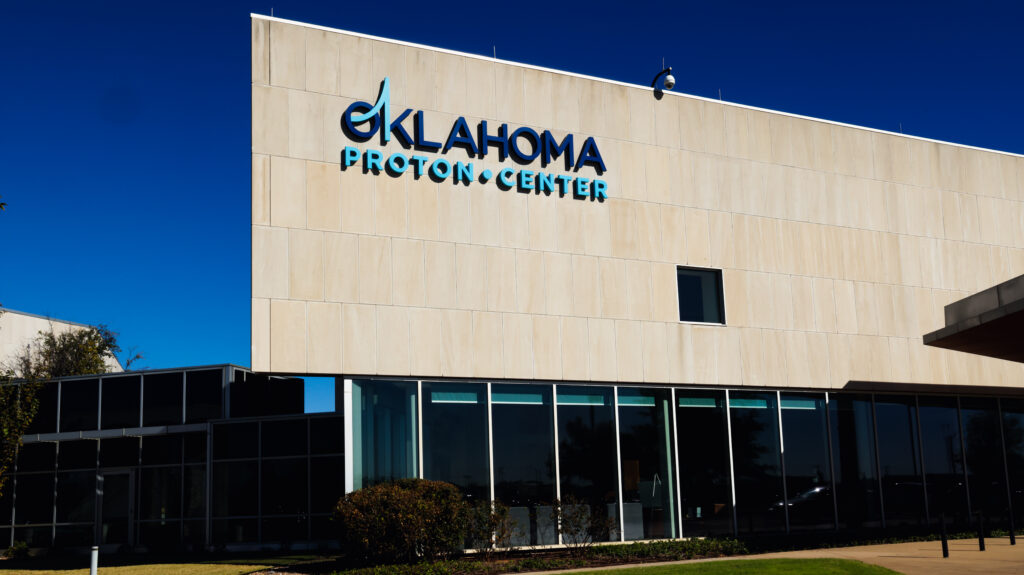A Statewide Call to Action: Oklahoma’s Plan to Reduce the Burden of Cancer
At Oklahoma Proton Center, we believe in the power of prevention, early detection, and access to advanced cancer care. That’s why we’re proud to share highlights from the newly released Oklahoma Cancer Prevention & Control Plan 2023–2028—a vital roadmap for reducing the impact of cancer across our state.

Each year, approximately 22,000 Oklahomans are diagnosed with cancer, and more than 8,000 lose their lives to the disease. With nearly 4 million people calling Oklahoma home, it’s safe to say this crisis affects us all. The good news? Many cancers are preventable—and when caught early, highly treatable.
The Plan’s Purpose
Developed by the Oklahoma Comprehensive Cancer Network (OCCN) in partnership with the Oklahoma State Department of Health, this plan focuses on prevention, early detection, survivorship, and health equity. It also prioritizes five major cancers: breast, cervical, colorectal, lung, and prostate—as well as childhood cancers.
Four Core Goals to Guide Progress
Primary Prevention
Primary prevention efforts aim to reduce cancer risks by addressing key factors such as obesity, commercial tobacco use, and exposure to the human papillomavirus (HPV). These efforts include expanding access to education and lifestyle programs, with a particular focus on reaching underserved communities. Additionally, increasing HPV vaccination rates is a critical strategy for preventing HPV-related cancers.
Screening & Early Detection

Efforts to improve cancer outcomes focus on increasing screening rates and reducing late-stage diagnoses for the most common cancers. This includes implementing mobile and community-based screening initiatives, with a particular emphasis on reaching rural and high-risk populations. By bringing services directly to these communities, barriers to early detection can be minimized, leading to earlier diagnoses and better treatment outcomes.
Cancer Survivorship
Supporting the physical and emotional well-being of both adult and pediatric cancer survivors is a vital component of comprehensive cancer care. This includes improving access to follow-up medical care, mental health resources, and patient navigation services to ensure survivors receive the ongoing support they need. By addressing both physical and emotional health, survivors can experience a better quality of life during and after their cancer journey.
Population Health & Health Equity
Ensuring that all communities—particularly those facing the highest cancer burden—have access to quality care and essential resources is a key priority in reducing health disparities. This involves addressing social drivers of health, including transportation challenges, housing instability, food insecurity, and limited access to healthcare services. By removing these barriers, individuals and families are better positioned to receive timely and effective cancer prevention, treatment, and support.
Where Oklahoma Stands
Oklahoma continues to face significant health challenges:
- We rank 48th in obesity, with predictions placing us at the top of the national obesity rate by 2030.
- Smoking remains a leading contributor to cancer deaths, despite recent declines.
- Screening rates for breast, cervical, and colorectal cancer still fall below national averages.
- Our HPV vaccination rates are among the lowest in the country.
These realities reinforce the importance of collaboration between health organizations, providers, employers, and policymakers to turn the tide.
How Oklahoma Proton Center Fits In

As one of the most advanced cancer treatment facilities in the region, Oklahoma Proton Center is uniquely positioned to support the goals of this statewide plan. Our focus is to help patients reduce side effects, preserve their quality of life, and continue thriving after treatment. We also partner with community providers and support groups to increase awareness, education, and access to care.
Let’s Work Toward a Cancer-Free Oklahoma
The OCCN emphasizes that reducing cancer isn’t just a healthcare challenge—it’s a community effort. Whether you’re a patient, provider, policymaker, or business leader, you have a role to play. Together, we can ensure every Oklahoman—no matter where they live or who they are—has the opportunity to live a healthier, cancer-free life.
For more on how to get involved or to read the full Oklahoma Cancer Prevention & Control Plan 2023–2028, visit oklahoma.gov/occn.
